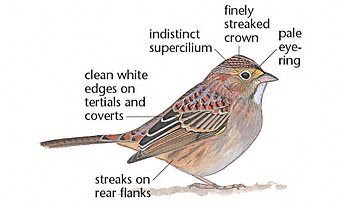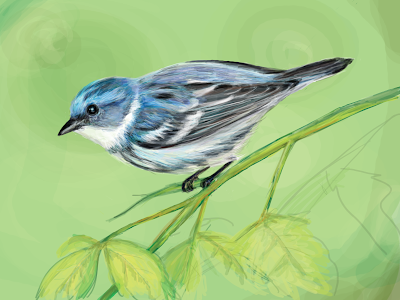Northern Parula
OK, I have words and birds, so next time I update I promise whims aplenty.
Northern Parula
OK, I have words and birds, so next time I update I promise whims aplenty.


Common Nighthawk
For the most part, these birds are active during the night as you could probably guess. We usually hear them doing their "peent" call right before dawn while we are setting up our mist nets. And they also seem to like to sleep in the road while I'm driving up to our banding sites. (Don't worry they always fly away when they hear the car) Once in awhile we also see and hear them well into the daytime. Then they transform into Common Dayhawks, of course.
If you are enjoying a summer evening, remember to look for the nighthawk's long dark wings with white central spots. Or listen for the nasal "peent peent" call coming from the sky. Or I suppose just look out for any bird shaped tree branches during the day.

Dickcissel
A funny story is that we caught a few female House Sparrows last summer in Wisconsin, and we sort of guessed that they were Dickcissels at first since we had never caught a House Sparrow before. Sure, there is no question what's a House Sparrow when you see one on a city block, but a bird in the hand can sometimes be deceiving! If you look at the below picture of a female House Sparrow, you can see that they do look a little similar. Oh, the joys of little brown birds..
Female House Sparrow
This week, we got to band our first woodpeckers at Camp Bowie!
Ladder-backed Woodpecker, juvenile
We actually got two Ladder-backed Woodpeckers (mother and juvenile) in the same net at Stonehouse and two again the next day at Mesquite.
This is a juvenile because of the red tipped feathers on the head. The adult male has much more extensive red on the head.
From the back, you can see the woodpecker's pointy tail feathers. These feathers are much stronger and stiffer on woodpeckers than for other birds so they can use them to balance on the side of a tree.
We had another new visitor to the nets this week which was a complete surprise. It was a female black-and-white Warbler! We thought we were completely done banding warblers for the season, but I guess not. For the most part, warblers that we had the chance of seeing only migrate through Texas on their way much further north. But according to the B&W Warbler's range map there is a little spot in central Texas where they breed.
Female Black-and-white Warbler (photo taken during training)
For now, I have a couple days off, but hopefully there will be some more new birds next week!
 and the Cerulean Warbler (per request of MAPS biologist Tiffany!)
and the Cerulean Warbler (per request of MAPS biologist Tiffany!)